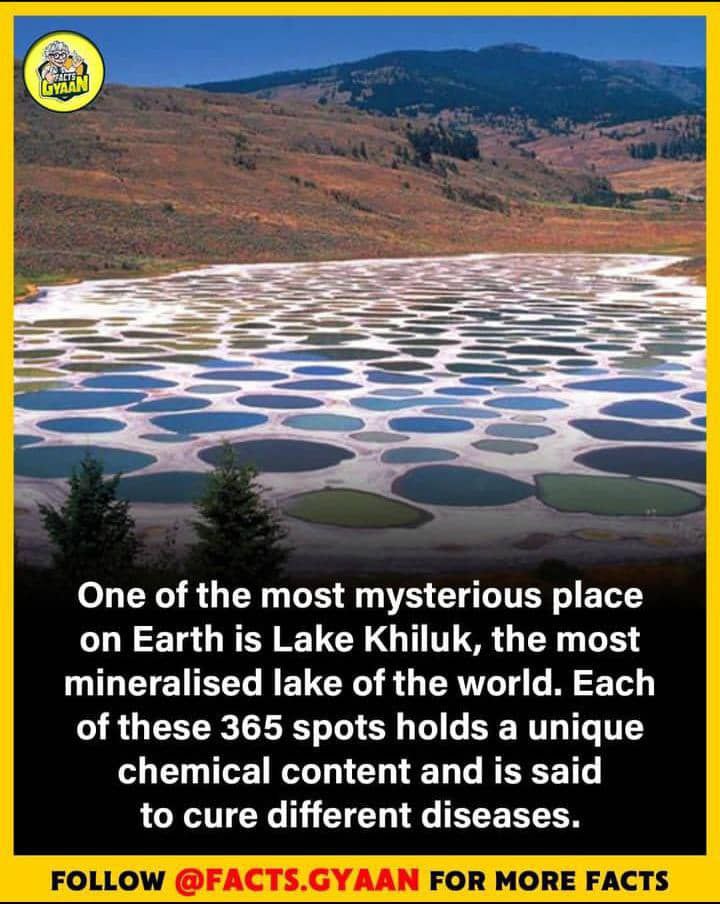Lake Khiluk also known as Spotted Lake (Kłlil’xᵂ) is a saline endorheic alkali lake located northwest of Osoyoos in the eastern Similkameen Valley of British Columbia, Canada, accessed via Highway 3.
Originally named in the Nsyilxcən language of the Syilx First Nation of the Okanagan Valley as Kłlil’xᵂ, Spotted Lake was for centuries and still remains revered as a sacred site thought to provide therapeutic waters. During World War I, the minerals of Spotted Lake were used in manufacturing ammunition.
Yes, this place actually exists and it’s just another example of how weird and wonderful nature can be – who can make this stuff up? Let’s look at some facts you need to know about this magical place!
Lake Khiluk is the most mineralized lake in the world. Each spot holds a different cure due to the unique chemical content found within each puddle.  It’s located in British Columbia, Canada, northwest of the town of Osoyoos. The lake measures 0.16 miles (.25 km) wide by 0.43 miles (.7 km) long with a combined shore length of just over one mile (1.7 km).
It’s located in British Columbia, Canada, northwest of the town of Osoyoos. The lake measures 0.16 miles (.25 km) wide by 0.43 miles (.7 km) long with a combined shore length of just over one mile (1.7 km).
According to the First Nations Okanagan (Sylix) tribe, Lake Khiluk is a sacred place of healing. The Okanagan tribe used the water in the spots to treat conditions such as warts, skin disease, body aches, and battle wounds Lake Khiluk is considered a saline endorheic alkali lake.
According to Wiki, “An endorheic basin is a closed drainage basin that retains water and allows no outflow to other external bodies of water, such as rivers or oceans, but converges instead into lakes or swamps, permanent or seasonal, that equilibrate through evaporation.” So what’s left at the end of the evaporation are spots or puddles of highly concentrated minerals.
 During the summer, most of the water evaporates from the lake, leaving the colorful spots of minerals. The lake bottom around the spots dries and hardens forming natural paths throughout the lake. The colors of the spots change with the time of day and seasons The most predominate mineral found in the spots is magnesium sulfate.
During the summer, most of the water evaporates from the lake, leaving the colorful spots of minerals. The lake bottom around the spots dries and hardens forming natural paths throughout the lake. The colors of the spots change with the time of day and seasons The most predominate mineral found in the spots is magnesium sulfate.
There are plenty of calcium and sodium sulphates too. Scientists have identified eight other minerals present in some of the spots. Four more minerals were found in lesser quantities, among these four are silver and titanium.
During World War I ammunition was made using minerals from Lake Khiluk ,The land used to belong to the family of Ernest Smith but after many years of haggling, the First Nations tribe was able to purchase the land. Their goal is to preserve it as a sacred healing site.
